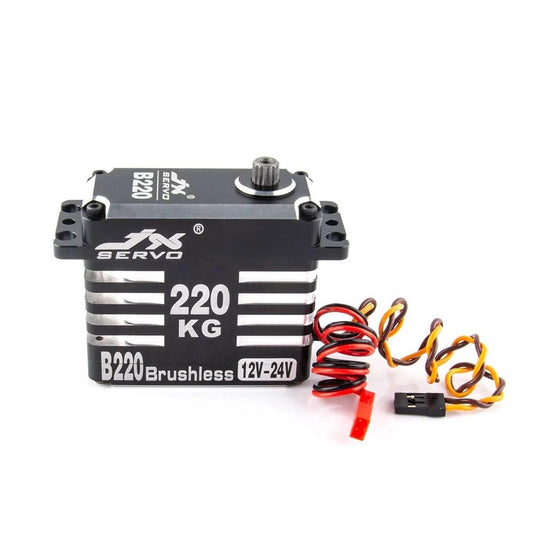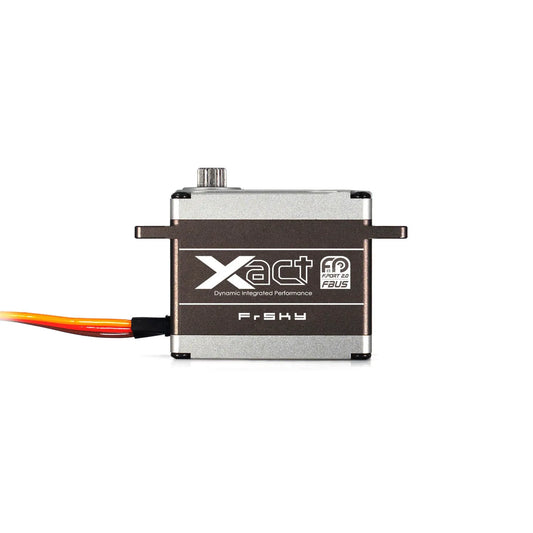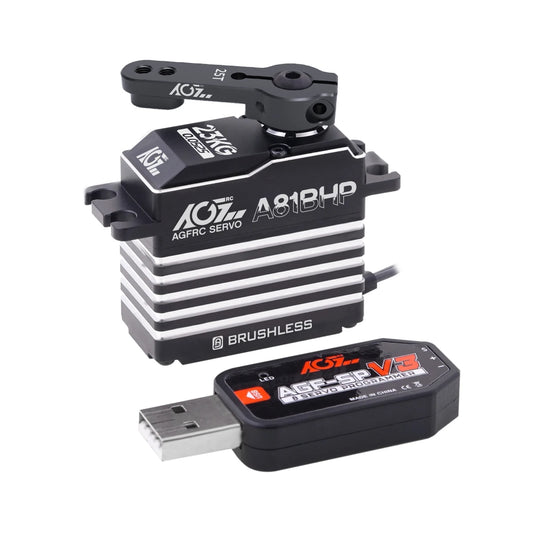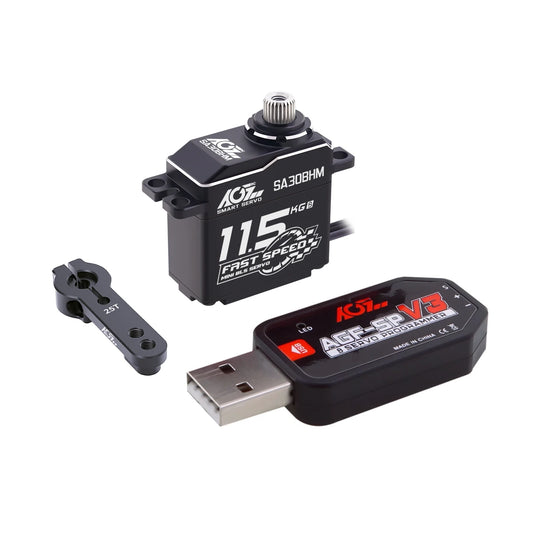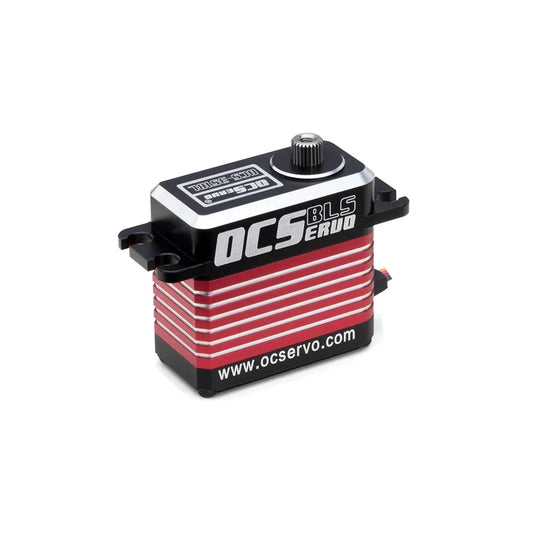-
JX B220 220KG 12-24V High Torque Servo for 1/5 RC Car Steering Gear Robotic Helicopter Industry Brushless Servo For Rc Drone
Regular price $269.98 USDRegular priceUnit price per -
GXservo HS-1005SGT 150KG Servo - Large Torque 12V-16.8V High Voltage CNC Aluminium Shell Metal Gear Brushless Waterproof RC Car boat Drone Big Models
Regular price $164.00 USDRegular priceUnit price per -
GXServo HS-1005SGT 200KG Brushless Servo - All Metal Digital High-voltage Robot Arm RC Car Drone Servo
Regular price $279.00 USDRegular priceUnit price per -
FrSky Xact Brushless Series BLS5400H Series - 4.8V-8.4V 17.2Kgf.cm - 54.9kgf.cm BLS5401H/BLS5402H/BLS5403H/BLS5404H/BLS5405H
Regular price $100.00 USDRegular priceUnit price per -
Futaba S-C400 S.Bus2 High-Voltage Brushless Programmable Servo for RC Cars | 6.6kg-cm Torque | 0.08s Response
Regular price $119.00 USDRegular priceUnit price per -
AGFRC A81BHP - 23KG Super Speed Steel Gears HV Brushless Programmable Standard Steering Servo For 1/8 RC Truck Car Boat Aircraft
Regular price From $39.66 USDRegular priceUnit price per -
AGFRC SA30BHM - 11.5KG HV High Speed Programmable Motor Brushless Mini Smart Steering RC Servo for 1/12 1/16 RC Car Rock Crawler
Regular price From $40.64 USDRegular priceUnit price per -
OCServo OCS-351BL - 8.4V 35kg.cm 77g 0.08S/60° Brushless Motor High Torque Servo Steel Gear All CNC Case Waterproof BLS
Regular price From $47.90 USDRegular priceUnit price per -

MKS HBL6625 Mini Titanium Gear Glider Wing High Voltage Servo Motor, Brushless, 6.0V–8.4V, 6.0 kg-cm
Regular price $235.00 USDRegular priceUnit price per -
MKS HV6120 Brushless Metal Gear Digital Wing Servo — 5.0 kg-cm (7.4V), 0.089 s, 11 g, 3.5–8.4V for F5J/F3J/F3K
Regular price $109.00 USDRegular priceUnit price per -
MKS X6 HBL575SL Brushless Titanium Gear Low Profile Digital Servo Servos Motor
Regular price $233.00 USDRegular priceUnit price per -
MKS X6 HBL575 Brushless Titanium Gear High Speed Digital Servo (High Voltage)
Regular price $299.00 USDRegular priceUnit price per -
MKS Servos X6 HBL599 High Voltage Brushless Titanium Gear High Torque Servo Motor
Regular price $429.00 USDRegular priceUnit price per -
MKS X6 HBL599SL 8.4V High Torque Digital Brushless Servos Motor Metal Gear
Regular price $249.00 USDRegular priceUnit price per -
MKS X5 HBL550L 8.4V Brushless Digital Servo Motor Metal Alloy Gear Short Version
Regular price $189.00 USDRegular priceUnit price per -
MKS X5 HBL550LX Brushless Low Profile Digital Servo Motor High Voltage
Regular price $189.00 USDRegular priceUnit price per -
MKS X5 HBL550 Brushless Metal Gear High Torque Digital Servos Motor (High Voltage)
Regular price $188.00 USDRegular priceUnit price per -
MKS HBL380 Ultra Torque Brushless Servo Motor HV 2S LiPo 31kg-41kg
Regular price $299.00 USDRegular priceUnit price per -
MKS X8 HBL3850 Brushless Metal Gear High Torque Servo Motor
Regular price $319.00 USDRegular priceUnit price per -
MKS X8 HBL388 Brushless Metal-Gear High Torque Digital Servo Motor
Regular price $329.00 USDRegular priceUnit price per -
FEETECH SM120BL Servo Motor, 24V RS485 Serial, 120kg.cm Torque, Brushless, Steel Gears, 360° Range, Aluminium 7075
Regular price From $384.00 USDRegular priceUnit price per -
FEETECH SM260B-C001 Servo Motor, 24V RS485 control, 260kg.cm peak torque, brushless, steel gears, 12-bit encoder
Regular price From $645.00 USDRegular priceUnit price per -
FEETECH SM8524BL-C001 Servo Motor, 24V Brushless Serial Bus, 85kg.cm Torque, 360° Rotation, Aluminium Case, Steel Gears
Regular price From $211.00 USDRegular priceUnit price per -
FEETECH SM8512BL Servo Motor, 12V RS485 Brushless, 85kg.cm Torque, Steel Gears, Aluminium Case, 360° Control
Regular price From $212.00 USDRegular priceUnit price per -
FEETECH SM45BL Servo Motor, 24V RS485 Bus, Brushless, 45kg.cm Peak Torque, 70RPM, 12-bit Encoder, Aluminium Case
Regular price From $141.00 USDRegular priceUnit price per -
FEETECH SM80BL Servo Motor, RS485 Serial Bus, Brushless, 12V 80kg.cm & 24V 85kg.cm, Steel Gears, Aluminium Case
Regular price From $186.00 USDRegular priceUnit price per -
FEETECH FT5425BL Servo Motor, 180° Brushless Digital, Steel Gears, 28.5kg·cm @8.4V, 0.08s/60° Speed, 4–12V
Regular price $98.00 USDRegular priceUnit price per -
FEETECH FT600B Servo Motor, 24V Brushless, 600kg.cm Torque, 180° PWM Control, Aluminum Case, Steel Gears
Regular price From $799.00 USDRegular priceUnit price per -
FEETECH FT860B Servo Motor, Brushless, Steel Gears, 180° Travel, 25T Spline, 6–9V, 70kg.cm Peak @8.4V
Regular price $143.00 USDRegular priceUnit price per -
FEETECH FT870B Servo Motor, 180° Brushless, Titanium Gears, 75kg.cm @8.4V / 70kg.cm @12V, 25T 5.9mm Spline
Regular price From $136.00 USDRegular priceUnit price per -
FEETECH FT1000 Servo Motor 24V Brushless, 1000kg.cm Stall, 180° PWM, FT-1000-C001, Steel Gears, Aluminum Case
Regular price From $1,508.00 USDRegular priceUnit price per -
FEETECH FT450B Servo Motor, 24V Brushless, 450kg.cm Peak Torque, 180° PWM Control, Aluminum Case, 25T Spline
Regular price $689.00 USDRegular priceUnit price per -
FEETECH FT750B Servo Motor, 24V Brushless, 750kg·cm Stall Torque, 180° Travel, Digital PWM Control, Aluminum Case
Regular price $999.00 USDRegular priceUnit price per -
FEETECH FT955BL Servo Motor, 8.4V Brushless, 50kg.cm Peak Torque, Steel Gears, Aluminum Case, 25T/5.9mm Spline
Regular price From $175.00 USDRegular priceUnit price per -
FEETECH STS3025BL Servo Motor, 12V Brushless Magnetic Encoder, TTL Double Shaft, 20/40kg.cm, 170RPM max
Regular price From $143.00 USDRegular priceUnit price per -
FLYSFY FXS380 i-BUS2 Waterproof Servo Motor, Brushless, 6V–8.4V, 29–38Kg·cm Torque, Metal Alloy Gears (PP67) for RC Crawler/Boat
Regular price $249.00 USDRegular priceUnit price per
